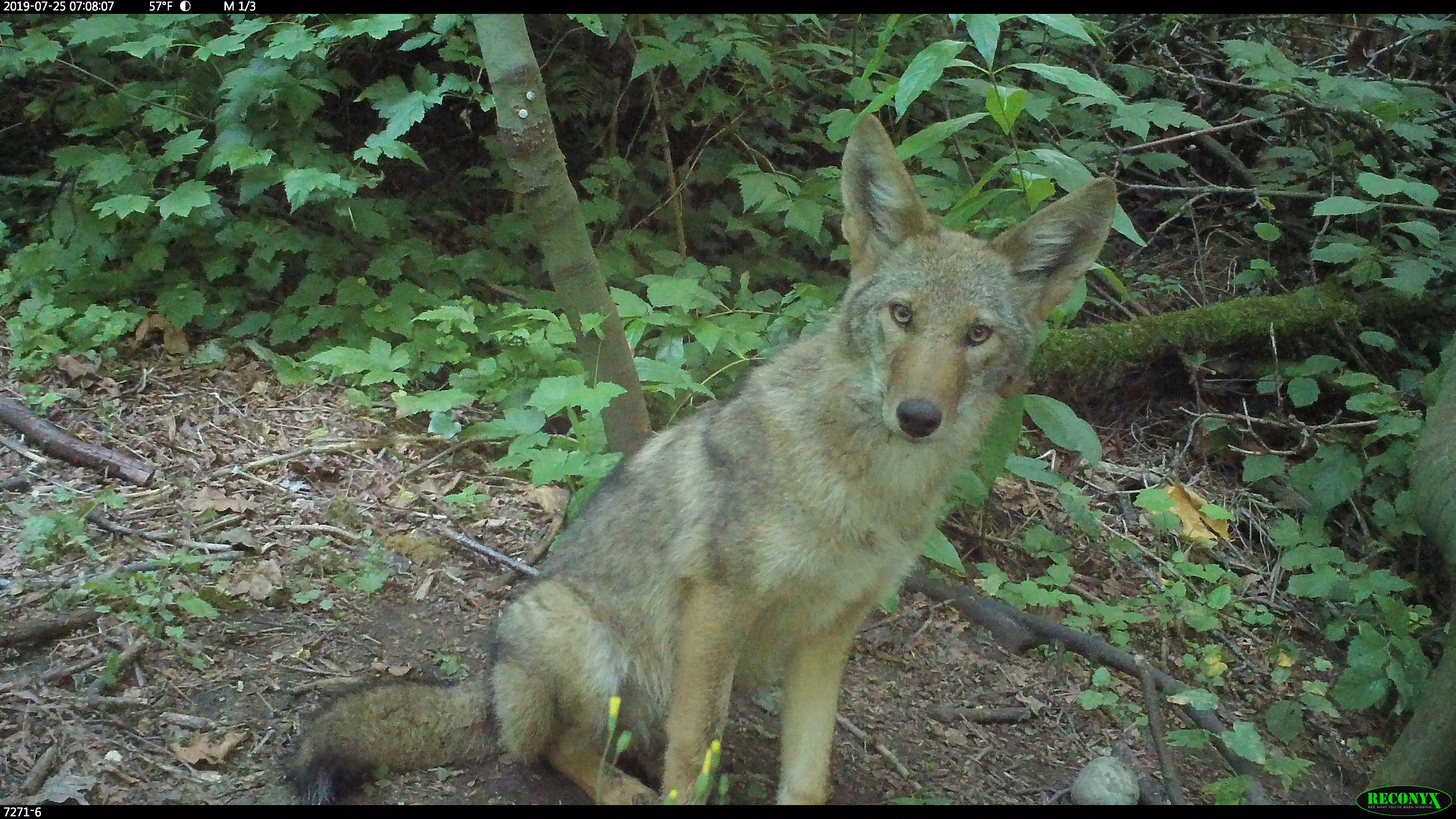A coyote captured on a wildlife camera in a North Seattle green space.
Urban ecologists have observed higher biodiversity of many species in wealthier neighborhoods. Until recently, however, this so-called "luxury effect" had not been tested for mammals. Seattle University Associate Professor of Biology Mark Jordan joined researchers from across North America to test this effect. They used a combined dataset from wildlife cameras from 20 cities. The research, published in a recent issue of Global Change Biology, found that the strongest predictor of biodiversity was urban intensity. More developed areas had fewer species. Nine of the 20 cities also showed some degree of the luxury effect. Seattle had one of the strongest positive relationships between wealth and biodiversity.
Additional research reported by Dr. Jordan and colleagues shows that use of community reporting tools for wildlife also correlate with wealth. We receive more reports on our Carnivore Spotter website from higher income neighborhoods. These results point to a greater need for equity in conservation outreach and urban planning.
Dr. Jordan and his students continue to collaborate with Seattle's Woodland Park Zoo to monitor over 30 camera traps in the greater Seattle area. They are also pursuing community outreach and engagement in neighborhoods with residents that have been historically underrepresented in wildlife conservation.

